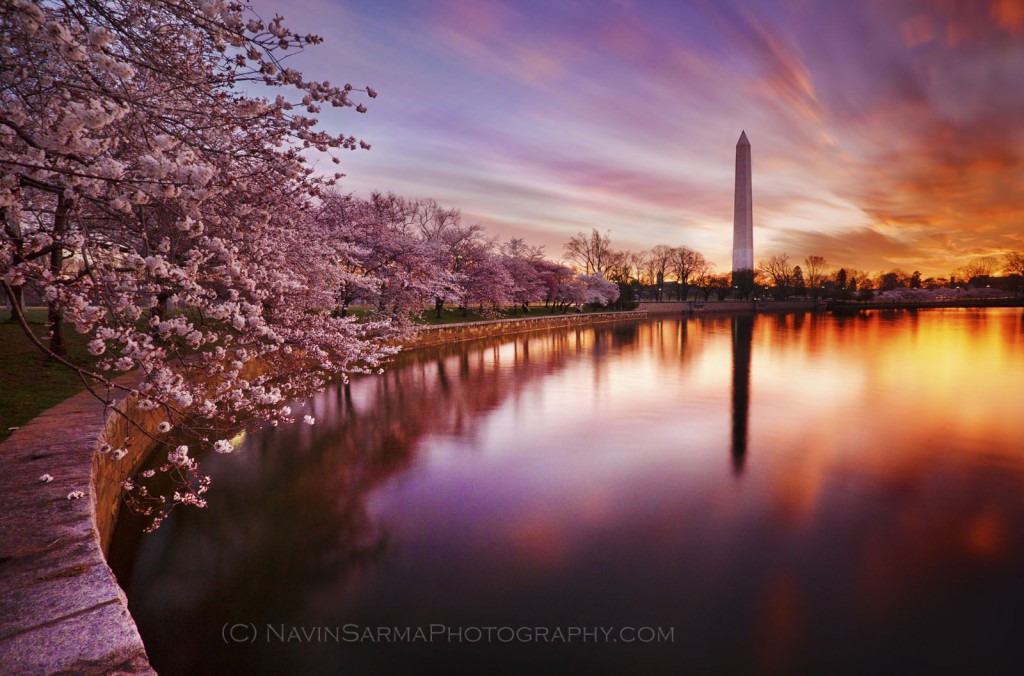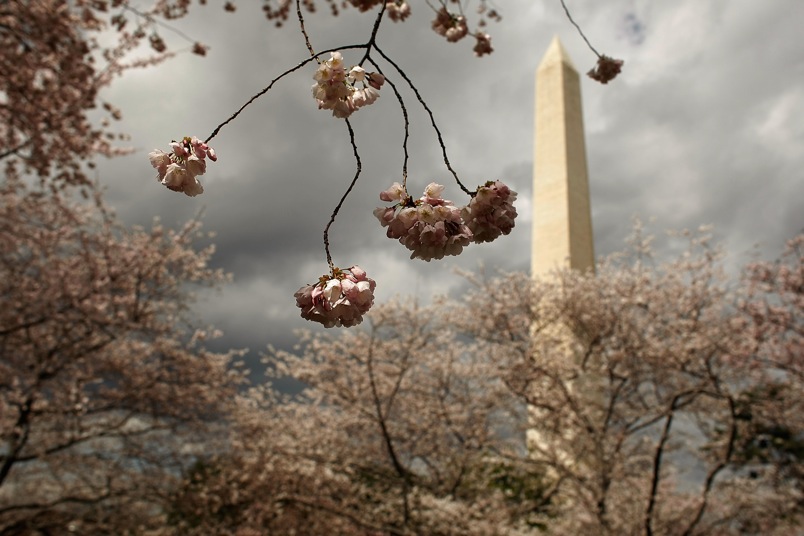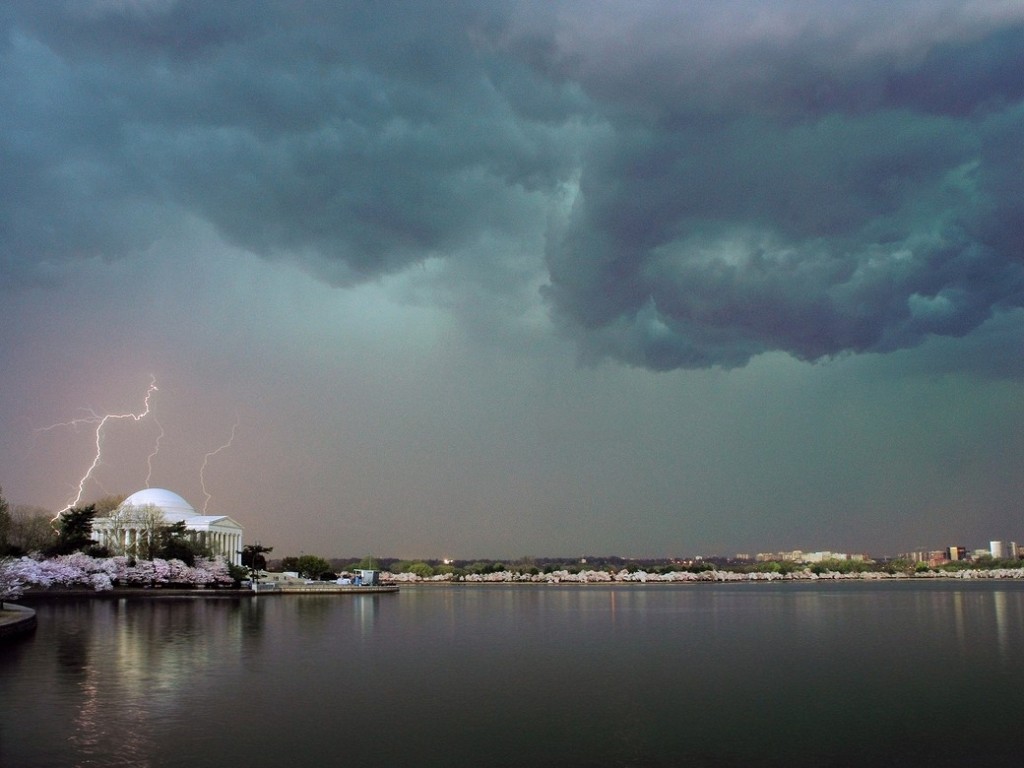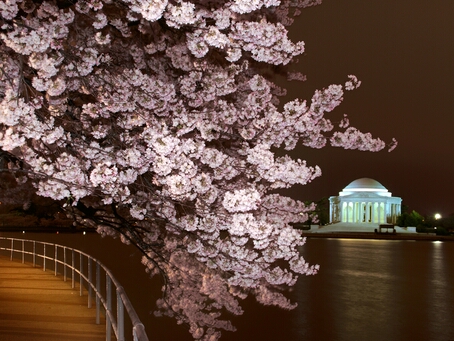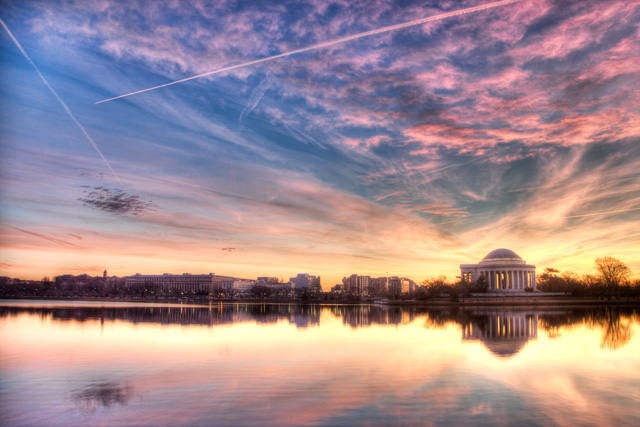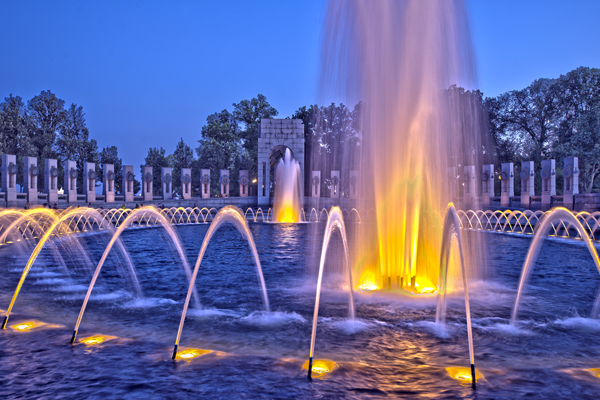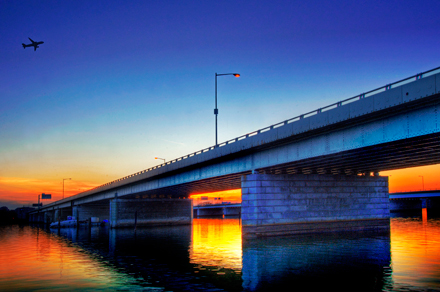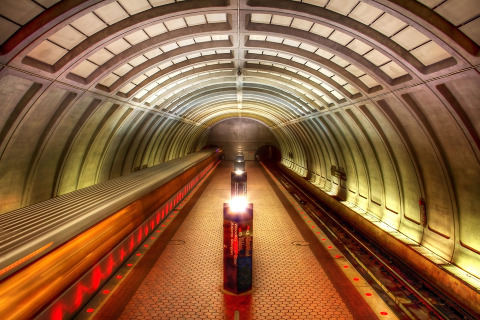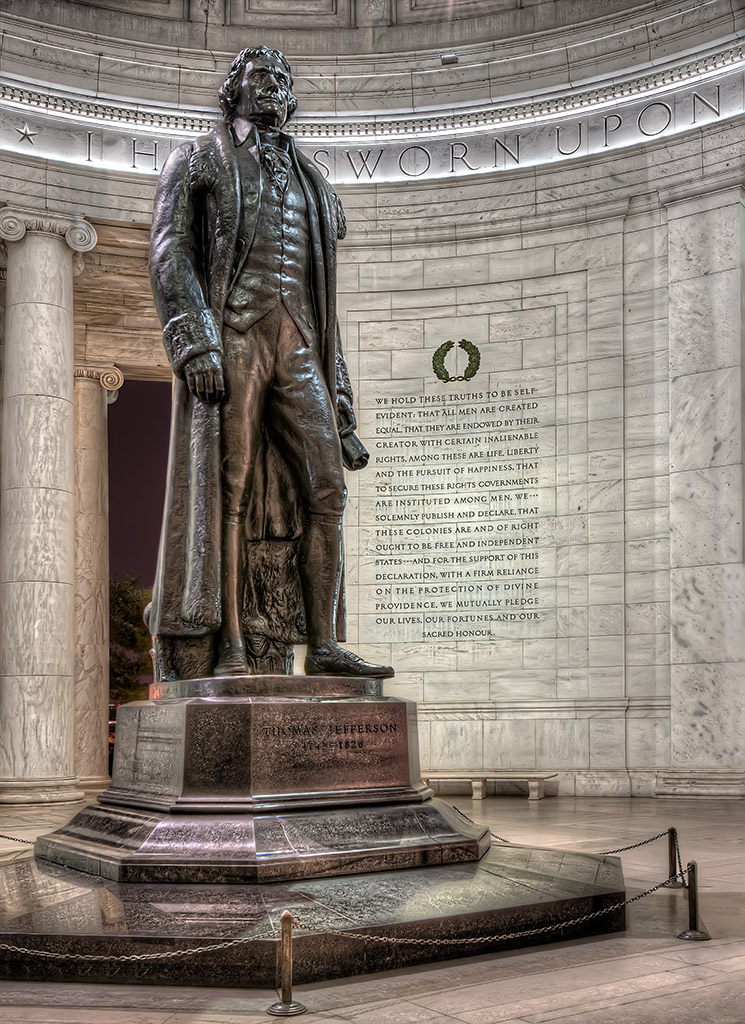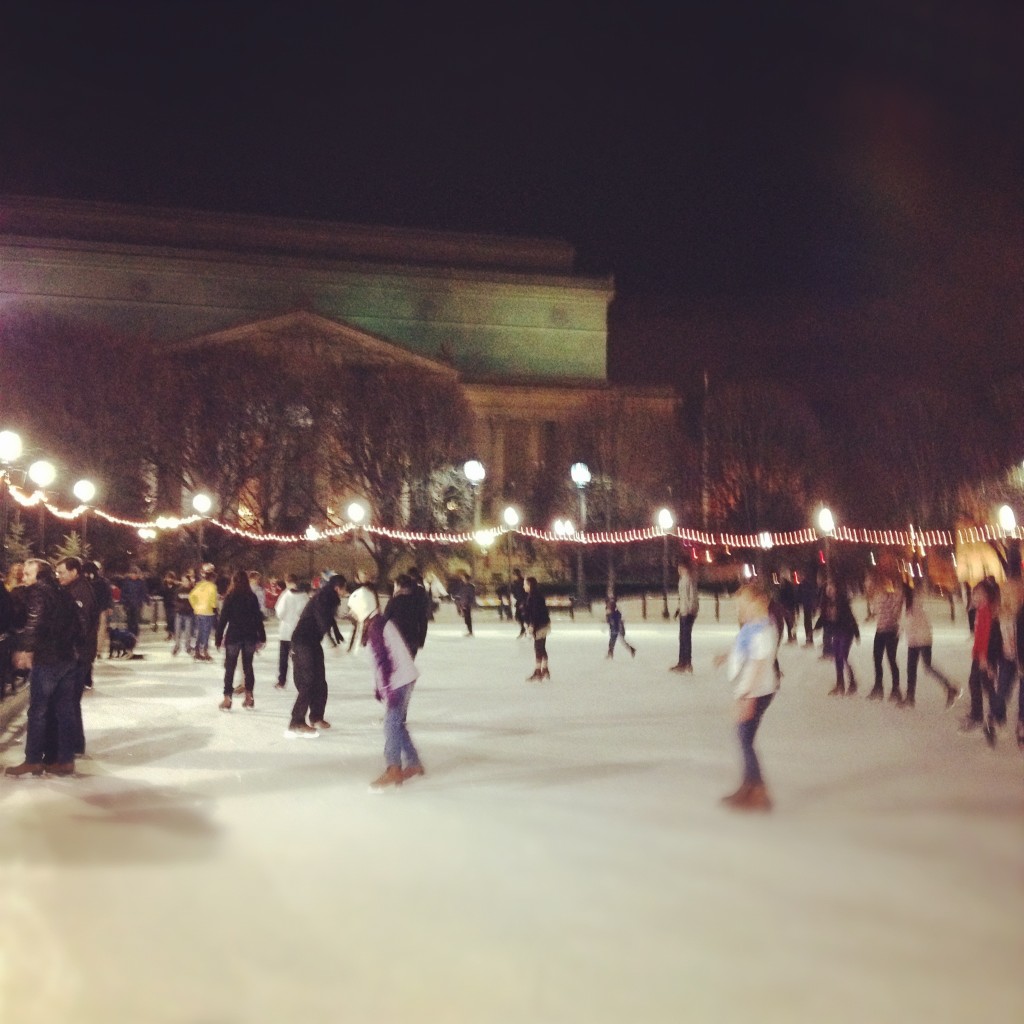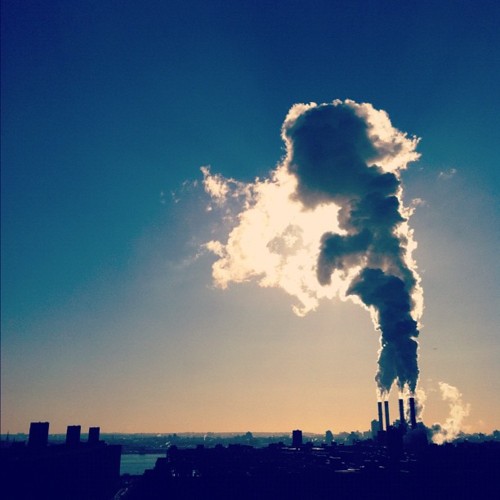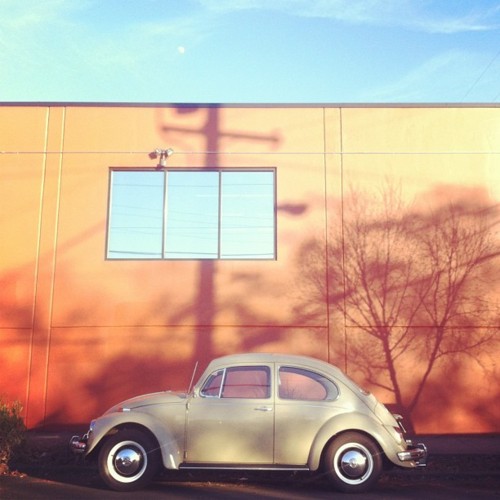Yep, 2012 marks the 100th anniversary of Washington D.C.’s cherry trees being planted around the Tidal Basin. These trees, a gorgeous gift from Japan, are celebrated every year during the National Cherry Blossom Festival, which brings flocks of tourists (and photographers!) to Washington to marvel at the fleeting explosion of pink and white. This year the D.C. Commission on Arts & Humanities has organized a public arts festival to coincide with the blossom madness and the folks at FotoDC are holding a photography contest with different categories and great prizes. Peak bloom this year is expected early, between March 24 and March 31.
The blooms are crazy-photogenic, but can be challenging to shoot as you jostle with thousands of others determined to get that perfect shot (or just happily gawking). Local photographer Brandon Kopp recently wrote up a great and detailed blog entry full of tips on shooting the blossoms which I thought was worth a link!
So just for fun, here are a few shots from around the web that I found special:
That’s just plain beautiful.
Stormy blossoms win with me!
WOW! Really stormy blossoms…
Sunrise is an extremely popular time to photograph the cherry blossoms, but there will be plenty of competition. I think I might head down there at night; I love night photography and it should be quiet. Worked well in the image above.
Let me know if you’ve got any special blossom photos; I’d be happy to share.

